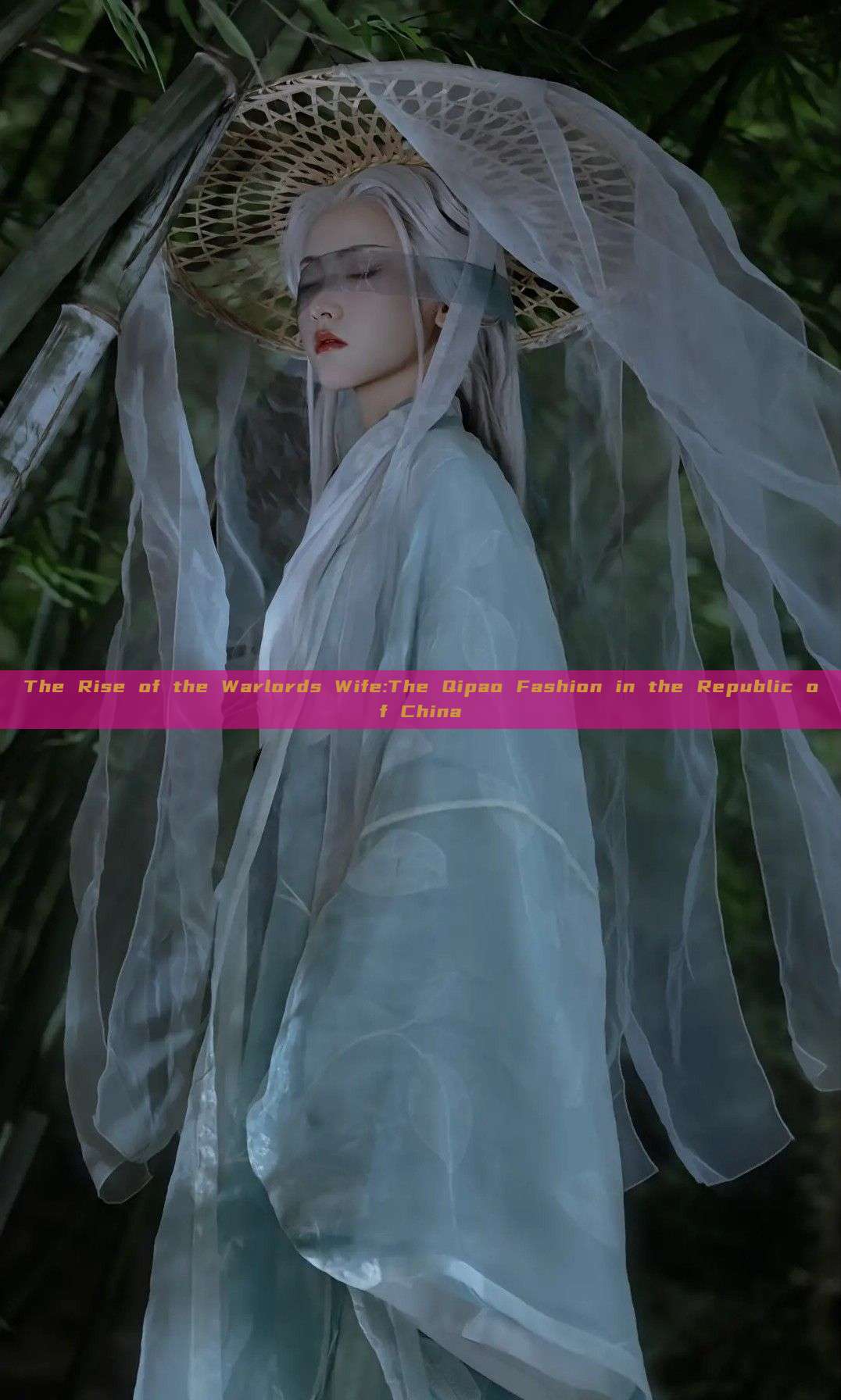In The era of the Republic of China, the qipao, a traditional Chinese dress, experienced a renaissance as it became a symbol of power and status for the wives of military leaders and warlords. This article delves into the historical context of qipao fashion in the era of the Warlords, exploring its significance in the lives of these powerful women and how it reflected their roles and identities.

During the period of political transition and social upheaval, China witnessed a significant change in fashion, influenced by a blend of traditional and modern elements. The qipao, a traditional Chinese dress originating from the Manchu era, gained renewed popularity during this era. It became a symbol of respectability, elegance, and power, worn by women in high society, particularly the wives of military leaders and warlords.
The qipao worn by these women was not just a piece of clothing; it was a statement of their social status and identity. The intricate designs, vibrant colors, and intricate patterns reflected their status as powerful women in their respective communities. The qipao became a symbol of their authority and influence, as they played significant roles in their husbands' political and military affairs.
The fashion trend was influenced by various factors, including the cultural and social changes taking place during this era. The rise of modernization and westernization brought about a blend of traditional and modern elements in fashion. The qipao, which had been around for centuries, underwent changes to accommodate modern tastes and styles. This made it more appealing to women in high society who wanted to maintain their traditional values while staying up with modern fashion trends.
The wives of warlords wore their qipao with pride and confidence. They wore it to important social events, political gatherings, and even on casual occasions. The qipao became a symbol of their power and influence as they played significant roles in their respective communities. They used their influence to promote their husbands' political causes and agendas, often wearing their qipao as a symbol of their authority and status.
The qipao also reflected the changing roles of these women within their families and communities. As they played significant roles in their husbands' political affairs, they also maintained their traditional roles as devoted wives and mothers. The qipao became a symbol of their dual identity - that of a powerful woman who could hold her own in public while also being a devoted wife and mother at home.
The rise of the qipao fashion during this era also reflected the changing social attitudes towards women's role in society. As women gained more freedoms and opportunities, they also gained more influence in society. The qipao became a symbol of this growing influence as these women used their power and influence to promote various causes, including education for women, women's rights, and social reforms.
In conclusion, the rise of the qipao fashion in the era of the Warlords reflected the changing roles and identities of powerful women in China. It was not just a piece of clothing; it was a symbol of their power, influence, and status. These women wore their qipao with pride and confidence, reflecting their roles as devoted wives, mothers, and powerful women who could hold their own in public. The qipao became a symbol of their dual identity - that of a traditional Chinese woman who valued her culture while also embracing modern values and opportunities. Through their qipao, these women made a statement about their power and influence, showing that they were not just submissive wives but powerful figures who could hold their own in any public setting.





